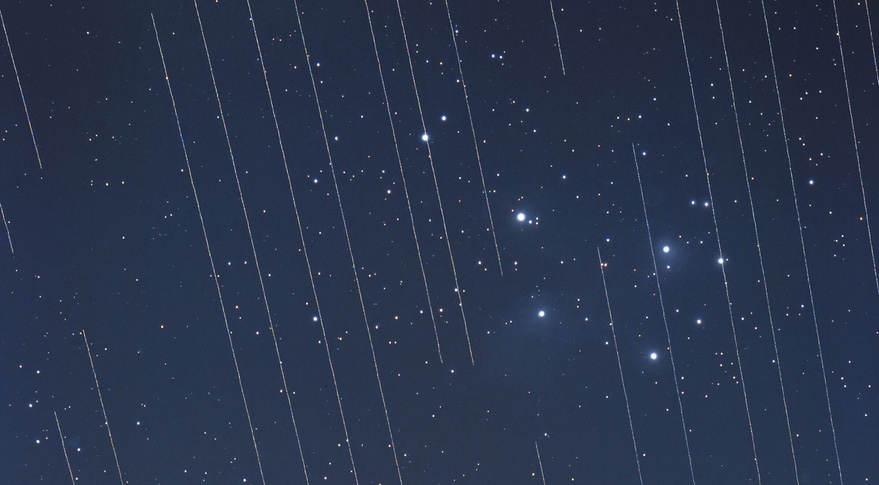WASHINGTON — The International Astronomical Union (IAU) is establishing a center to help astronomers deal with the adverse effects of satellite constellations.
The IAU said Feb. 3 it selected a proposal jointly submitted by the National Optical-Infrared Astronomy Research Laboratory, or NOIRLab, run by the National Science Foundation, and the Square Kilometer Array Observatory (SKAO) to operate its Centre for the Protection of the Dark and Quiet Sky from Satellite Constellation Interference. The center will formally start operations April 1.
The center will bring together astronomers and other experts on various efforts to address the visible and radio interference caused by constellations like OneWeb and SpaceX’s Starlink. That work will include the development of software tools for astronomers, work on national and international policies, community outreach and work with industry on relevant technologies.
“The center will bring together astronomers, industry, policy experts and the wider community, and act as a bridge between all stakeholders,” said Piero Benvenuti, former general secretary of the IAU and director of the new center, in a press briefing. “The center is essentially a coordination center.”
The center will not, at least to start, be large. “The initial budget is not a big one,” he said. He did not disclose specific funding but noted the center would have a staff of seven full-time equivalents. Both NOIRLab and SKAO will provide some in-kind contributions. He said that, as the center expands its service, particularly with software, it will need more resources. “One of the tasks of the center will be to start fundraising with companies and foundations.”
That included, he said, companies developing satellite constellations. Before the IAU established the center, some astronomers had been working with satellite constellation operators, including through a series of workshops and other meetings. At the same time, other astronomers were sharply and publicly critical of those companies for launching thousands of satellites that are increasingly interfering with optical and radio astronomy.
Connie Walker of NOIRLab, a co-director of the center, said the center has established relationships with Amazon, OneWeb and SpaceX. “Each of those three major companies have indicated quite strongly that they would like to work with us wholeheartedly, and do as much as they can,” she said.
Most of that focus has been SpaceX, which has now launched more than 2,000 Starlink satellites. As part of those efforts, SpaceX first tested darkening reflective surfaces on the satellite to reduce its brightness, then installed visors to block sunlight from reflecting off those surfaces. That has helped reduce the brightness of newer satellites, although a recent study found those satellites have not yet quite reached the magnitude threshold recommended by astronomers.
Walker noted that OneWeb, whose satellites are in orbits far above the maximum altitude of 600 kilometers recommended by astronomers to minimize the time each night those satellites are visible, told astronomers they’re not able to lower their orbits. However, the company said would take other steps, such as coating reflective surfaces, to reduce their brightness.
“It’s better to make these agreements than to go through regulations because regulations take a long time to solidify, but we’re hopeful in talking with them already that some comprises can be made,” she said.
However, the center will also address some policy solutions, including through the United Nations Committee on the Peaceful Uses of Outer Space and the International Telecommunication Union. Those efforts could be part of broader discussions about space sustainability, said Richard Green of the University of Arizona.
“We think this IAU center can significantly contribute to overcoming these challenges” in developing policy, he said. “It ties into the whole suite of concerns about space traffic management.”
He also endorsed a cooperative approach with industry in the hopes of creating a “voluntary corporate culture” that seeks to mitigate the impact of those companies’ constellations. “On the other hand, the notion of having our policy approach to regulators in multiple countries is to codify these good intentions so that, if the profit motive does start to intrude and make these mitigations difficult for them, we have some backup to say there really is a requirement that they look into these issues.”
